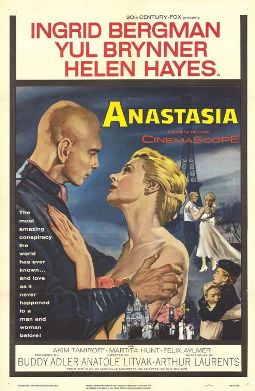Events
| | This section needs expansion. You can help by adding to it. (October 2015) |
| Years in Russia: | 1729 1730 1731 1732 1733 1734 1735 |
| Centuries: | 17th century · 18th century · 19th century |
| Decades: | 1700s 1710s 1720s 1730s 1740s 1750s 1760s |
| Years: | 1729 1730 1731 1732 1733 1734 1735 |
Events from the year 1732 in Russia
| | This section needs expansion. You can help by adding to it. (October 2015) |
| | This section needs expansion. You can help by adding to it. (October 2015) |
| | This section needs expansion. You can help by adding to it. (October 2015) |

Catherine II, most commonly known as Catherine the Great, was the reigning empress of Russia from 1762 to 1796. She came to power after overthrowing her husband, Peter III. Under her long reign, inspired by the ideas of the Enlightenment, Russia experienced a renaissance of culture and sciences, which led to the founding of many new cities, universities, and theatres, along with large-scale immigration from the rest of Europe and the recognition of Russia as one of the great powers of Europe.

Elizabeth or Elizaveta Petrovna was Empress of Russia from 1741 until her death in 1762. She remains one of the most popular Russian monarchs because of her decision not to execute a single person during her reign, her numerous construction projects, and her strong opposition to Prussian policies.

Anna Ioannovna, also russified as Anna Ivanovna and sometimes anglicized as Anne, served as regent of the duchy of Courland from 1711 until 1730 and then ruled as Empress of Russia from 1730 to 1740. Much of her administration was defined or heavily influenced by actions set in motion by her uncle, Peter the Great, such as the lavish building projects in St. Petersburg, funding the Russian Academy of Science, and measures which generally favored the nobility, such as the repeal of a primogeniture law in 1730. In the West, Anna's reign was traditionally viewed as a continuation of the transition from the old Muscovy ways to the European court envisioned by Peter the Great. Within Russia, Anna's reign is often referred to as a "dark era".

Anastasia is a 1956 American historical drama film starring Ingrid Bergman, Yul Brynner, and Helen Hayes. The film was directed and written by Anatole Litvak and Arthur Laurents, adapting the 1952 play written by Guy Bolton and Marcelle Maurette. It was inspired by the story of Anna Anderson, one of the best known of the many Romanov impostors who began to emerge after the Imperial family was murdered in July 1918.

Augustus III was King of Poland and Grand Duke of Lithuania from 1733 until 1763, as well as Elector of Saxony in the Holy Roman Empire where he was known as Frederick Augustus II.

Count Alexey Petrovich Bestuzhev-Ryumin was a Russian diplomat and chancellor. He was one of the most influential and successful diplomats in 18th-century Europe. As the chancellor of the Russian Empire was chiefly responsible for Russian foreign policy during the reign of Empress Elizaveta Petrovna.

The Duchy of Courland and Semigallia was a duchy in the Baltic region, then known as Livonia, that existed from 1561 to 1569 as a nominally vassal state of the Grand Duchy of Lithuania and subsequently made part of the Crown of the Polish Kingdom from 1569 to 1726 and incorporated into the Polish–Lithuanian Commonwealth in 1726. On October 24, 1795, it was annexed by the Russian Empire in the Third Partition of Poland.

Grand Duchess Anna Petrovna of Russia was the eldest daughter of Emperor Peter I of Russia and his wife Empress Catherine I. Her younger sister, Empress Elizabeth, ruled between 1741 and 1762. While a potential heir in the reign of her nephew Peter II, she never acceded to the throne due to political reasons. However, her son Peter III became Emperor in 1762, succeeding Elizabeth. She was the Duchess Consort of Holstein-Gottorp by marriage. She was born in Moscow and died in Kiel in her youth, at the age of 20.

The Treaty of Fontainebleau was an agreement concluded in Fontainebleau, France, on 11 April 1814 between Napoleon and representatives of Austria, Russia and Prussia. The treaty was signed in Paris on 11 April by the plenipotentiaries of both sides and ratified by Napoleon on 13 April. With this treaty, the allies ended Napoleon's rule as emperor of the French and sent him into exile on Elba.

The Rothschild egg is a jewelled, enameled, decorated egg that was made under the supervision of the Russian jeweller Peter Carl Fabergé by the workshop of Michael Perchin in 1902. Béatrice Ephrussi de Rothschild presented this egg to Germaine Halphen upon her engagement to Béatrice's younger brother, Édouard Alphonse James de Rothschild.

Denmark–Russia relations are the relations between the countries of Denmark and Russia. The Kings of Denmark and the Russian Tsars interacted from the 15th century onwards – subsequently Denmark's control of access to and from the Baltic Sea had considerable significance for the trade and naval flexibility of the Russian Empire, while rivalries between Denmark and Sweden on the one hand and between Sweden and Russia on the other led to alliances and military support. Denmark and the USSR established diplomatic relations on 18 June 1924.

Events from the year 1881 in Russia.

Events from the year 1739 in Russia
Events from the year 1736 in Russia

Events from the year 1735 in Russia

Events from the year 1729 in Russia

Events from the year 1730 in Russia
Events from the year 1740 in Russia
Events from the year 1731 in Russia
Events from the year 1742 in Russia